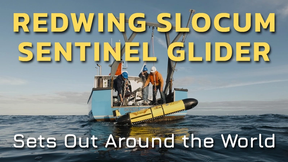Ship-borne Invasive Species
Scientists have developed the first global model that analyses the routes taken by marine invasive species. The researchers examined the movements of cargo ships around the world to identify the hot spots where these aquatic aliens might thrive. Marine species are taken in with ballast water on freighters and wreak havoc in new locations, potentially driving native species to extinction. The research was published in the Journal Ecology Letters.
As Brazil is experiencing a great increase in shipping, mostly due to the ongoing O&G boom spearheaded by huge deepwater pre-salt reservoirs recently being uncorked, this study can be considered of particular importance for Brazilian environmental agencies such as IBAMA, which are responsible for monitoring and controlling present and future environmental hazards which may affect the country’s diverse and fragile ecosystems, both at sea and along the coast and also at inland waterways such as the Amazon River.
The boom in global shipping over the past 20 years has led to growing numbers of species moving via ballast tanks, or by clinging to hulls. Some ports such as San Francisco and Chesapeake Bay have reported several exotic new species arriving every year. Economic estimates indicate that marine invaders can have huge impacts that last for decades. Now, scientists from the UK and Germany have developed a model that might help curb these unwanted visitors. They obtained detailed logs from nearly three million voyages that took place in 2007 and 2008. Scientists mapped the global routes taken by cargo ships over a two-year period, "Our model combines information such as shipping routes, ship sizes, temperatures and biogeography to come up with local forecasts of invasion probabilities," said Prof Bernd Blasius from the University of Oldenburg. While this is a mathematical model, the researchers were able to adjust it by carrying out field observations. They were able to estimate the probability that a species can survive a journey and establish a population in a subsequent port of call.
"It is called ecological roulette," said Dr Michael Gastner from the University of Bristol.
One of the most celebrated examples of an invasive species is the Zebra mussel. They travelled by cargo ship from the Black Sea to the Great Lakes in North America in 1988. The invaders have caused severe economic problems as they have multiplied rapidly, clogging water pipes. At one point, they cut off a town's water supply.
The hazards of invasive ship-borne species in Brazil is not limited to cargo ships, as there are increasing numbers of foreign-built oil rigs, OSVs, FPSOs, drill ships, survey vessels and cruise ships docking in Brazilian ports almost in a continuous basis and both government and academia will be hard put to monitor ballast waters and hulls with this intensive foreign ship traffic along the whole coast of Brazil.
While the growth in cargo carried across the oceans means that the risk of future invasions is severe, the researchers say that tackling the ballast water issue can be a powerful means of mitigation. But Dr. Gastner is worried that economic pressure might prevent ship owners from taking the necessary steps. "There is no single solution that seems to be working on a global scale; different ship sizes have different engineering constraints - and it takes too much time to have the water filtered." "For the shipping industry, even an extra half an hour in port means additional costs and they are trying to reduce this as much as they can," he said.
This study should also serve as a reference for some Brazilian Universities that are researching such matters. There does not appear to be any for of intensive monitoring of foreign ship ballasts and hulls at Brazilian ports, but there is some academic research being done on the matter of Ship-borne Invasive Species by local universities and we will take a look at these in the future.
Sources: Journal Ecology Letters and BBC Online


























 August 2025
August 2025



